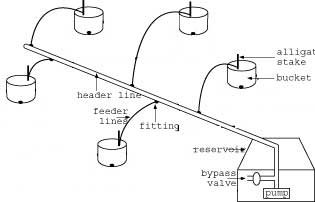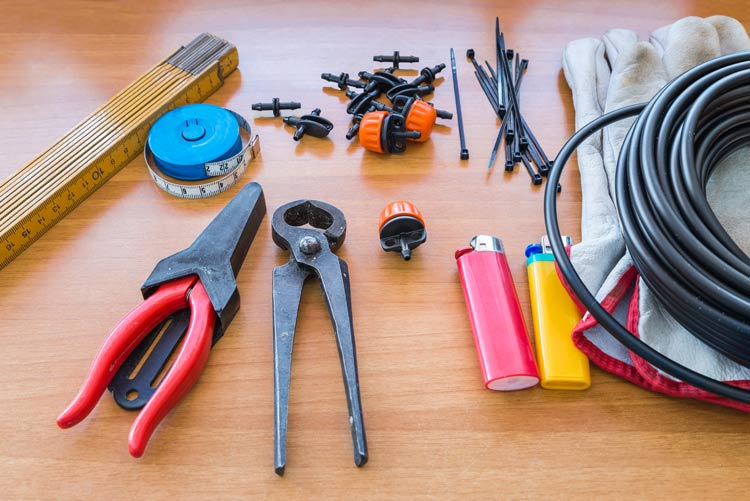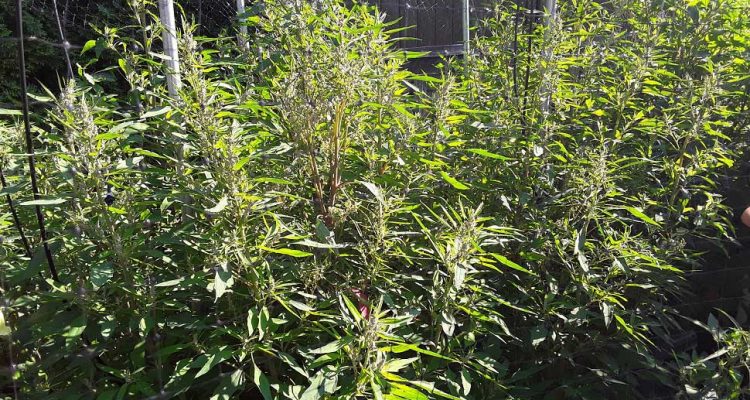The bucket system is a productive way to grow large plants. Plants like peppers, tomatoes and tomatillos are a few such kinds of plants that can thrive in systems like this.
Building a Top Feeding Bucket System
Option B: Bucket System
Tools
1. Drill and 1-inch hole saw.
2. Knife.
3. Wrench.
Materials
1. One 3 to 4-gallon mesh pot or one solid 3 to 4-gallon bucket per plant.
2. One reservoir
3. One roll of 1/8 or 3/16-inch black poly tubing.
4. One barbed or threaded fitting per plant to connect 1/2-inch tubing to 1/8, 3/16, or 1/4 inch tubing. 1/4-inch is most common.
5. One alligator stake per plant.
6. One 1/2-inch end cap.
7. One to two 1/2-inch elbows.
8. One pump.
9. Drippers.
Support System: Building the system
A. If a bucket is used, it can be placed where desired.

B. A short piece (approximately 6 inches) of 3/4-inch yellow hose should be attached to the 3/4-inch thru-hull fitting.
C. A piece of 1/2-inch poly tubing (feeder line) is cut and laid near the plants.
H. A 1/2-inch end cap is inserted at the end away from the reservoir. Soaking tubing in hot water allows for easier connections.
D. A 1/2-inch poly elbow is inserted at the open end that is nearest the reservoir. The elbow should be directly above the reservoir.
E. 1/2-inch black poly tubing should be connected to the other end of the elbow and then to the pump. A highly recommended option is to put a bypass valve or a 1/2-inch T just after the pump so that the solution stays aerated and agitated, and the flow can be controlled. More 1/2-inch fittings can be placed on the bypass valve so that the aerated liquid is forced to the bottom near the pump. Also, forcing water downward can reduce possibilities of splashing and making a mess on the floor.
F. Small holes should be poked into the 1/2-inch poly header line that is on the flood table. A punch or small drill bit can be used to make the holes for the fittings.
G. 1/8 or 3/16-inch tubing is connected to the fittings and secured to each pot using alligator stakes. It is best to look ahead to see where the plants will be when it is harvest time so that the proper lengths can be cut.
H. One lines are in place, drippers can be inserted into the ends of each one. The key factors with drippers are psi and rate. For example, the psi could be as little as 7 psi to drip while the rate of one dripper could be 2 litres(quarts) per hour while another is 1 gallon per hour.

Feeding
It is easiest to feed the plants so they do not dry up. This could mean a feeding per day in the spring to multiple, 1/2 hour feedings per day in the summer.



